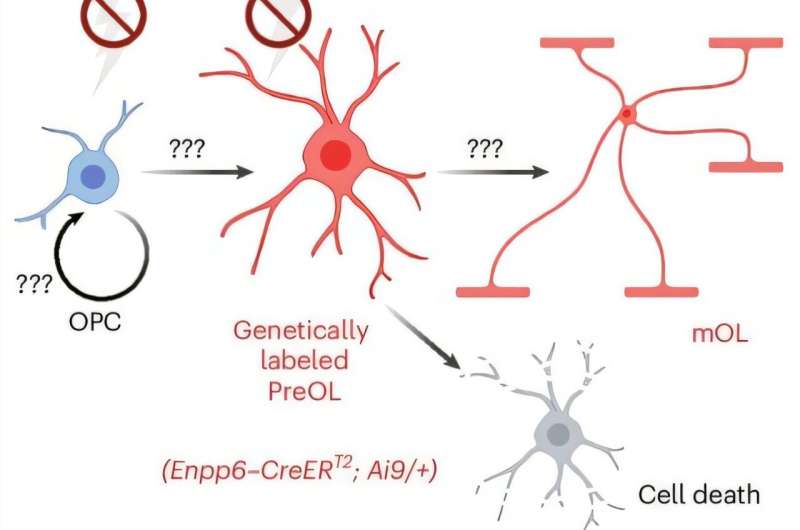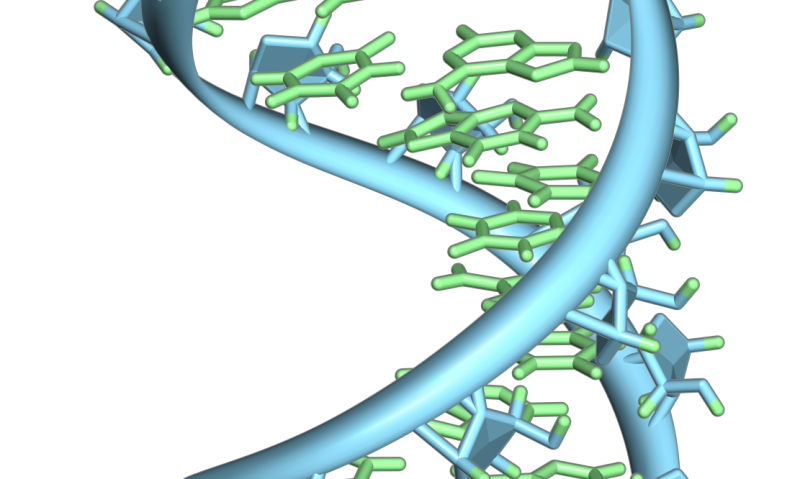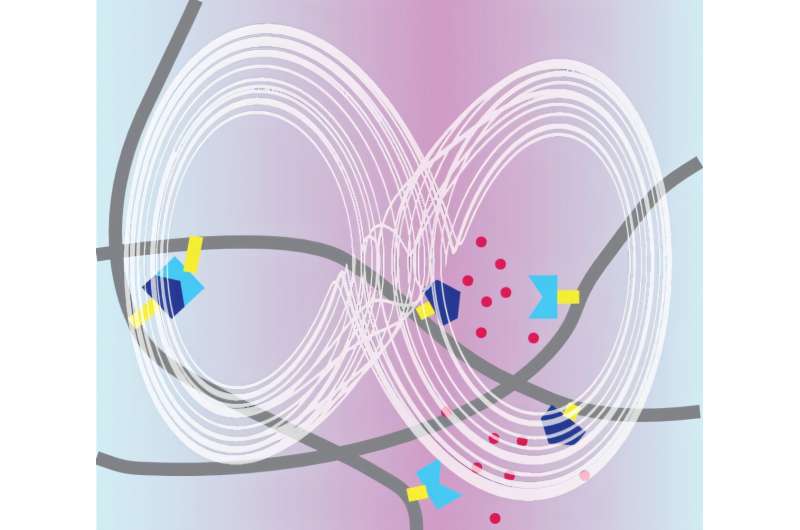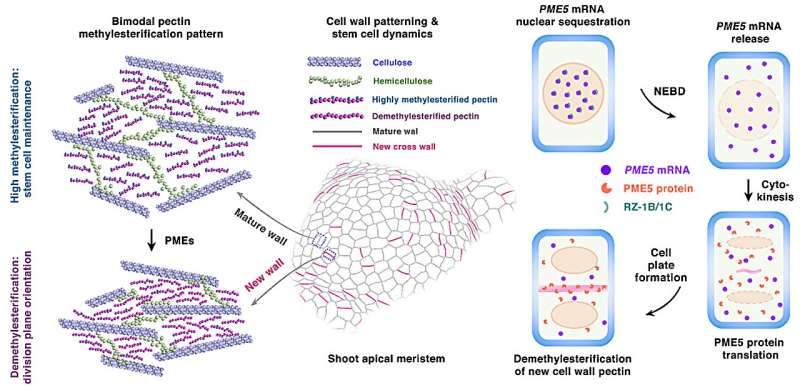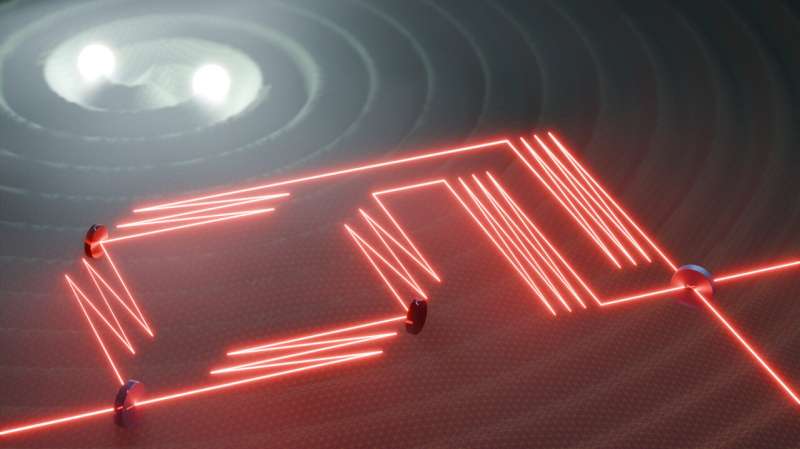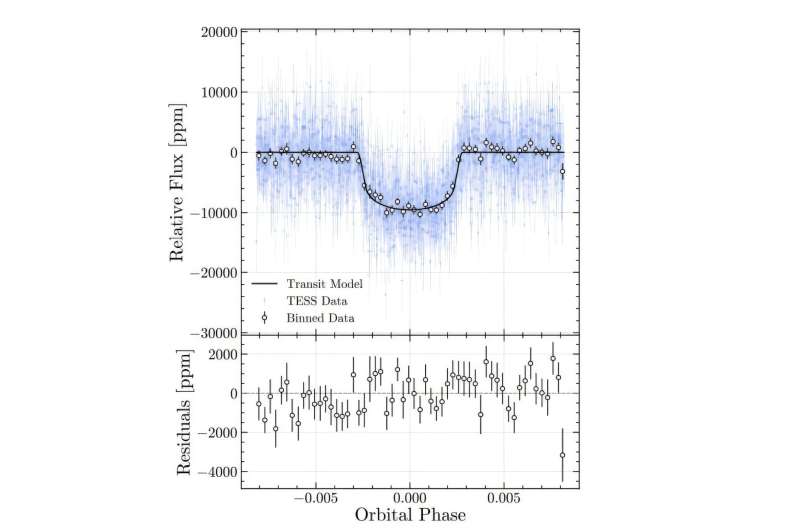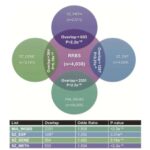KOSTYA MANENKOV və STEFANIE DAZIO tərəfindən
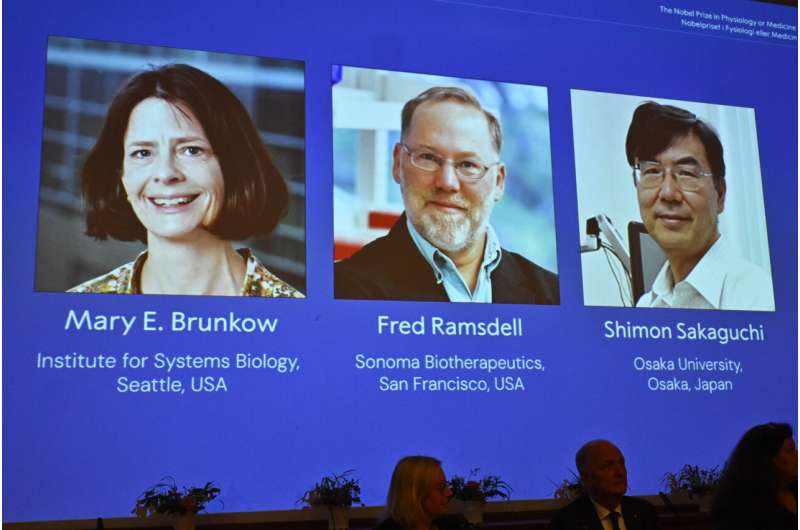
edited by Andrew Zinin
Editors’ notesA screen showing the photos of Mary E Brunkow, Fred Ramsdell and Shimon Sakaguchi who were awarded the Nobel Prize in Medicine or Physiology, at the Nobel Assembly of the Karolinska Institutet, in Stockholm, Sweden, Monday, Oct. 6, 2025. Credit: Claudio Bresciani/TT News Agency via AP
İmmunitet sisteminin öz bədənimizə deyil, mikroblara hücum etməyi bildiyinə dair kəşflərə görə üç alim bazar ertəsi tibb üzrə Nobel mükafatını qazandı.
https://googleads.g.doubleclick.net/pagead/ads?gdpr=0&us_privacy=1—&gpp_sid=-1&client=ca-pub-0536483524803400&output=html&h=280&slotname=7587637799&adk=1434173251&adf=4198688998&pi=t.ma~as.7587637799&w=750&fwrn=4&fwrnh=0&lmt=1759824941&rafmt=1&armr=3&format=750×280&url=https%3A%2F%2Fmedicalxpress.com%2Fnews%2F2025-10-nobel-prize-medicine-scientists-peripheral.html&fwr=0&rpe=1&resp_fmts=3&wgl=1&aieuf=1&uach=WyJXaW5kb3dzIiwiMTkuMC4wIiwieDg2IiwiIiwiMTQwLjAuNzMzOS4xMjgiLG51bGwsMCxudWxsLCI2NCIsW1siQ2hyb21pdW0iLCIxNDAuMC43MzM5LjEyOCJdLFsiTm90PUE_QnJhbmQiLCIyNC4wLjAuMCJdLFsiR29vZ2xlIENocm9tZSIsIjE0MC4wLjczMzkuMTI4Il1dLDBd&abgtt=6&dt=1759824941414&bpp=28&bdt=238&idt=33&shv=r20251006&mjsv=m202510020101&ptt=9&saldr=aa&abxe=1&cookie=ID%3De77740426f8da9bc%3AT%3D1735295852%3ART%3D1759824811%3AS%3DALNI_MbHbvhLj3WydQ3lYshQhNgDg8E9nQ&gpic=UID%3D00000f80ad9e2337%3AT%3D1735295852%3ART%3D1759824811%3AS%3DALNI_MYM9zSDwUrvOLsQ-H1E20L0IjGeMw&eo_id_str=ID%3Df152d1a4517561f1%3AT%3D1751526315%3ART%3D1759824811%3AS%3DAA-AfjYXsAMYxawkCSjU_EMOR4gg&prev_fmts=0x0%2C336x280&nras=1&correlator=2417923028321&frm=20&pv=1&rplot=4&u_tz=240&u_his=1&u_h=1080&u_w=1920&u_ah=1032&u_aw=1920&u_cd=24&u_sd=1&dmc=8&adx=448&ady=1070&biw=1905&bih=945&scr_x=0&scr_y=0&eid=31095048%2C31095050%2C31095053%2C31095055%2C31095079%2C42532523%2C95370627%2C95372358%2C95373012%2C42533294%2C95344789&oid=2&pvsid=1089190284715585&tmod=2120451577&uas=0&nvt=1&ref=https%3A%2F%2Fphys.org%2F&fc=1920&brdim=0%2C0%2C0%2C0%2C1920%2C0%2C1920%2C1032%2C1920%2C945&vis=1&rsz=%7C%7CpeEbr%7C&abl=CS&pfx=0&fu=128&bc=31&bz=1&td=1&tdf=2&psd=W251bGwsbnVsbCxudWxsLDNd&nt=1&ifi=2&uci=a!2&btvi=1&fsb=1&dtd=261
Mary E. Brunkow, Fred Ramsdell və Dr. Shimon Sakaguchi tərəfindən aparılan iş orqanizmin immunitet sistemini nəzarətdə saxlamaq üçün istifadə etdiyi, periferik immun tolerantlıq adlanan əsas yolu aşkar etdi. Mütəxəssislər tapıntıları 1-ci tip diabet, romatoid artrit və lupus kimi otoimmün xəstəlikləri anlamaq üçün kritik adlandırdılar.
Bir neçə il ərzində ayrı-ayrı layihələrdə alimlər üçlüyü – ikisi ABŞ-da və biri Yaponiyada – indi tənzimləyici T hüceyrələri adlandırılanların əhəmiyyətini müəyyən etdilər. Alimlər hazırda bu tapıntılardan müxtəlif yollarla istifadə edirlər: otoimmün xəstəliklər üçün daha yaxşı müalicə üsullarını tapmaq, orqan transplantasiyasının müvəffəqiyyətini artırmaq və bədənin xərçəngə qarşı mübarizəsini gücləndirmək və başqaları.
Nobel Komitəsinin sədri Olle Kampe deyib: “Onların kəşfləri immunitet sisteminin necə işlədiyini və niyə hamımızın ciddi otoimmün xəstəlikləri inkişaf etdirmədiyimizi anlamaq üçün həlledici oldu”.
64 yaşlı Brunkow hazırda Sietldəki Sistem Biologiyası İnstitutunda baş proqram meneceridir. 64 yaşlı Ramsdell San Fransiskoda yerləşən Sonoma Biotherapeutics şirkətinin elmi məsləhətçisidir. 74 yaşlı Sakaquçi Yaponiyanın Osaka Universitetinin İmmunologiya Sərhəd Araşdırmaları Mərkəzinin görkəmli professorudur.
Rəsmi olaraq Fiziologiya və Tibb üzrə Nobel Mükafatı kimi tanınan mükafat 2025-ci il Nobel Mükafatı elanlarından birincisidir və Stokholmdakı Karolinska İnstitutunda bir panel tərəfindən elan edilmişdir.
The physics prize will be announced on Tuesday, chemistry on Wednesday and literature on Thursday. The Nobel Peace Prize will be announced Friday and the Nobel Memorial Prize in economics Oct. 13.Osaka University professor Shimon Sakaguchi, one of two Japanese professors selected for the 2015 Canada Gairdner International Awards, speaks in an interview in Osaka, western Japan, March 24, 2015. Credit: Kyodo News via AP
Discover more
Pancreatic cancer treatment centers
Disease prevention products
Buy psoriasis treatment products
Clinical trial participation
Purchase multiple sclerosis medication
Purchase child safety gun locks
Purchase vaccination services online
Research grants
Pharmaceutical research jobs
Pharmaceutical stocks
The work that won the 2025 Nobel Prize in medicine
The immune system has overlapping ways to detect and fight bacteria, viruses and other intruders. But sometimes certain immune cells run amok, mistakenly attacking people’s own cells and tissues to cause autoimmune diseases.
Scientists once thought the body regulated this system only in a centralized fashion. Key immune soldiers such as T cells get trained to spot bad actors and those that go awry in a way that might trigger autoimmunity get eliminated in the thymus.
The Nobel winners unraveled an additional way the body keeps the system in check if immune cells later get confused and mistake human cells for intruders, which is what happens when a person has an autoimmune disease.
Sakaguchi said he “was curious about the mechanism of immune response that is supposed to protect oneself but also reacts to and attacks itself.”
His experiments in mice showed that the thymus pathway couldn’t be the only explanation. In 1995, he discovered a previously unknown T cell subtype, the regulatory T cells, that also could tamp down overreactive immune cells like a biological security guard.Osaka University professor Dr. Shimon Sakaguchi, right, receives flowers at a news conference in Suita, near Osaka, western Japan, Monday, Oct. 6, 2025, after he won the Nobel Prize in medicine. Credit: Shohei Miyano/Kyodo News via AP
Then in 2001, Brunkow and Ramsdell were working together at a biotech company investigating mice with an autoimmune disease. In painstaking work at a time when mapping genes was still an evolving field, they figured out that a particular mutation in a gene called Foxp3 was to blame—and quickly realized it could be a major player in human health, too.
“From a DNA level, it was a really small alteration that caused this massive change to how the immune system works,” Brunkow told AP.
Back in Japan, Sakaguchi noticed: “It was getting a lot of attention as one gene that can explain multiple autoimmune diseases, but still, why the gene causes the diseases was a mystery,” he said.
Two years later, Sakaguchi linked the discoveries to show the Foxp3 gene controls the development of those regulatory T cells so they’re able to curb other, overreactive cells.
Why this work matters
The work opened a new field of immunology, said Karolinska Institute rheumatology professor Marie Wahren-Herlenius.Mary E. Brunkow becomes emotional after hearing about winning a Nobel Prize in medicine for part of her work on peripheral immune tolerance, in Seattle, Monday, Oct. 6, 2025. Credit: AP Photo/Lindsey Wasson
Until the trio’s research was published, immunologists didn’t understand the complexity of how the body differentiates foreign cells from its own, said Dr. Jonathan Schneck, a cellular immunology expert at Johns Hopkins University.
One goal now, Schneck said, is to figure out how to increase the number of regulatory T cells—also known as T-regs—to help fight autoimmune diseases. That would decrease the need for today’s therapies, which instead suppress the immune system in ways that leave patients vulnerable to infection.
The American Association of Immunologists said the winners’ work “has fundamentally reshaped our understanding of immune balance.”
The discoveries haven’t yet led to new therapies, Schneck cautioned. But “it’s incredibly important to emphasize, this work started back in 1995 and we’re reaping the benefits but yet have many more benefits we can reap” as scientists build on their work.
How Mary E. Brunkow, Fred Ramsdell and Dr. Shimon Sakaguchi reacted
Thomas Perlmann, secretary-general of the Nobel Committee, said he reached Sakaguchi in his lab by phone Monday morning “and he sounded incredibly grateful, expressed that it was a fantastic honor. He was quite taken by the news.”
At a news conference hours later—which was interrupted by a congratulatory call from the Japanese prime minister—Sakaguchi called his win “a happy surprise.”
“There are many illnesses that need further research and treatment, and I hope there will be further progress in those areas so that findings will lead to prevention of diseases. That’s what our research is for,” he added.
Brunkow, meanwhile, got the news of her prize from an AP photographer who came to her Seattle home in the early hours of the morning.
She said she had ignored the earlier call from the Nobel Committee. “My phone rang and I saw a number from Sweden and thought: ‘That’s just, that’s spam of some sort.'”
“When I told Mary she won, she said, ‘Don’t be ridiculous,'” said her husband, Ross Colquhoun.
Ramsdell couldn’t be reached immediately by the AP or his employer, who thought he might be away on a backpacking trip.
Ramsdell “is one of the most humble people you’ll ever meet,” Jeff Bluestone, CEO of Sonoma Biotherapeutics, told AP. “It’s going to be great for us to toot his horn for him.”
The award ceremony will be Dec. 10, the anniversary of the death of Alfred Nobel, who founded the prizes. Nobel was a wealthy Swedish industrialist and the inventor of dynamite. He died in 1896.
The trio will share prize money of 11 million Swedish kronor (nearly $1.2 million).
Discover more
Science X network
Medical conference tickets
Buy psoriasis treatment products
Find genetic testing services online
Cancer treatment options
Purchase multiple sclerosis medication
Wellness programs
Pancreatic cancer treatment centers
Research grants
Medical journals subscription
Nobel committee announcement:
The Nobel Assembly at Karolinska Institutet has decided to award the 2025 Nobel Prize in Physiology or Medicine to:
Mary E. Brunkow, Institute for Systems Biology, Seattle, U.S.
Fred Ramsdell, Sonoma Biotherapeutics,San Francisco, U.S.
Shimon Sakaguchi, Osaka University, Osaka, Japan
“for their discoveries concerning peripheral immune tolerance”
They discovered how the immune system is kept in check
The body’s powerful immune system must be regulated, or it may attack our own organs. Mary E. Brunkow, Fred Ramsdell and Shimon Sakaguchi are awarded the Nobel Prize in Physiology or Medicine 2025 for their groundbreaking discoveries concerning peripheral immune tolerance that prevents the immune system from harming the body.
Every day, our immune system protects us from thousands of different microbes trying to invade our bodies. These all have different appearances, and many have developed similarities with human cells as a form of camouflage. So how does the immune system determine what it should attack and what it should defend?
Mary Brunkow, Fred Ramsdell and Shimon Sakaguchi are awarded the Nobel Prize in Physiology or Medicine 2025 for their fundamental discoveries relating to peripheral immune tolerance. The laureates identified the immune system’s security guards, regulatory T cells, which prevent immune cells from attacking our own body.
“Their discoveries have been decisive for our understanding of how the immune system functions and why we do not all develop serious autoimmune diseases,” says Olle Kämpe, chair of the Nobel Committee.
Shimon Sakaguchi was swimming against the tide in 1995, when he made the first key discovery. At the time, many researchers were convinced that immune tolerance only developed due to potentially harmful immune cells being eliminated in the thymus, through a process called central tolerance. Sakaguchi showed that the immune system is more complex and discovered a previously unknown class of immune cells, which protect the body from autoimmune diseases.
Mary Brunkow and Fred Ramsdell made the other key discovery in 2001, when they presented the explanation for why a specific mouse strain was particularly vulnerable to autoimmune diseases. They had discovered that the mice have a mutation in a gene that they named Foxp3. They also showed that mutations in the human equivalent of this gene cause a serious autoimmune disease, IPEX.A close-up view of a Nobel Prize medal at the National Institutes of Health (NIH) in Bethesda, Md., Tuesday, Dec. 8, 2020. Credit: AP Photo/Jacquelyn Martin, File
Two years after this, Shimon Sakaguchi was able to link these discoveries. He proved that the Foxp3 gene governs the development of the cells he identified in 1995. These cells, now known as regulatory T cells, monitor other immune cells and ensure that our immune system tolerates our own tissues.
The laureates’ discoveries launched the field of peripheral tolerance, spurring the development of medical treatments for cancer and autoimmune diseases. This may also lead to more successful transplantations. Several of these treatments are now undergoing clinical trials.
More information: www.nobelprize.org/prizes/medi … popular-information/
© 2025 The Associated Press. All rights reserved. This material may not be published, broadcast, rewritten or redistributed without permission.



